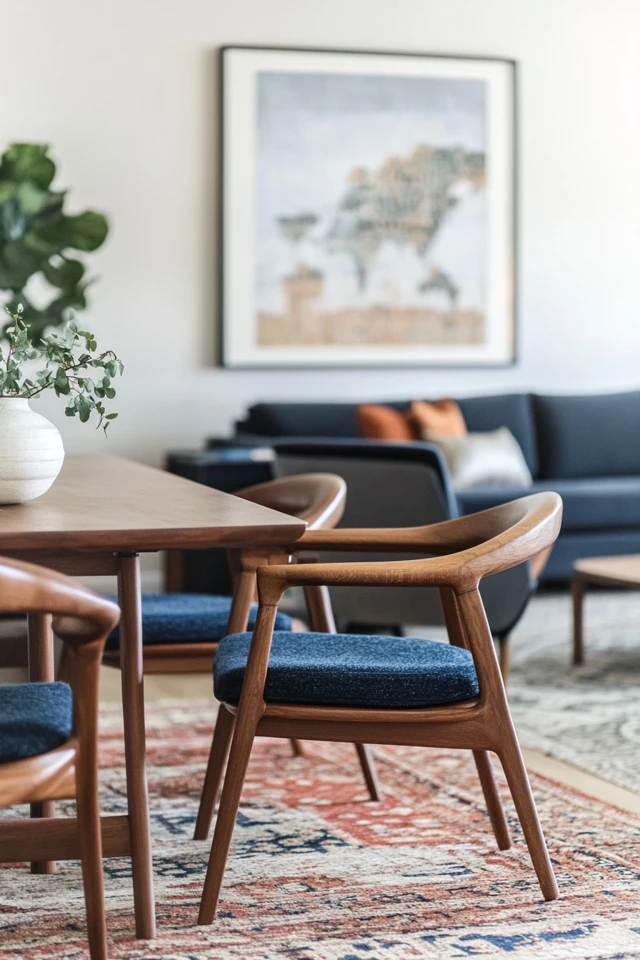Mid-century modern design has always been about timeless style, functionality, and a connection to nature. But what if you could enjoy this iconic aesthetic while also making environmentally conscious choices? By using sustainable materials, you can embrace the beauty of mid-century modern design without compromising the health of our planet.
I still remember the first time I designed a room entirely with sustainability in mind. The client wanted a mid-century modern vibe but was passionate about eco-friendly living. I swapped traditional materials for reclaimed wood, bamboo, and low-VOC finishes. The result? A stunning, timeless space that aligned with their values—and sparked a newfound love for green design in my own work.
In this guide, I’ll show you how to achieve a mid-century modern look using sustainable materials, from furniture and flooring to decor and textiles.
Why Choose Sustainable Materials?
- Environmental Impact: They reduce deforestation, waste, and greenhouse gas emissions.
- Longevity: Many eco-friendly materials are durable, making them ideal for furniture and decor.
- Health Benefits: Sustainable options, like low-VOC finishes, create healthier indoor air quality.
- Aesthetic Appeal: Natural and reclaimed materials beautifully complement the organic forms of mid-century modern design.
1. Opt for Reclaimed Wood Furniture
Why It Works:
Reclaimed wood offers the rich tones and textures of mid-century modern furniture without contributing to deforestation.
How to Incorporate It:
- Look for dining tables, coffee tables, or credenzas made from salvaged walnut, teak, or oak.
- Choose pieces with clean lines and tapered legs to capture the mid-century aesthetic.
- Refinish or repurpose old furniture to give it new life while maintaining its natural beauty.
Pro Tip: Pair reclaimed wood with modern accents, like metal or glass, for a polished look.
2. Choose Bamboo for Flooring and Furniture
Why It Works:
Bamboo is a renewable resource that grows quickly, making it an eco-friendly alternative to traditional hardwood.
How to Incorporate It:
- Install bamboo flooring for a sleek, retro vibe.
- Use bamboo chairs or shelving units to add warmth and texture to your space.
- Opt for bamboo blinds or shades for window treatments.
Pro Tip: Look for FSC-certified bamboo to ensure it’s sourced sustainably.
3. Use Low-VOC Paints and Finishes
Why It Works:
Low-VOC (volatile organic compound) products are safer for indoor air quality and reduce harmful emissions.
How to Incorporate It:
- Paint walls in classic mid-century hues like olive green, mustard yellow, or muted teal using low-VOC paints.
- Refinish furniture with low-VOC stains or water-based polyurethane for a glossy, durable finish.
Pro Tip: Pair bold wall colors with neutral furnishings to maintain a balanced mid-century look.
4. Incorporate Cork for Texture and Warmth
Why It Works:
Cork is a renewable material harvested from the bark of cork oak trees, making it a sustainable and stylish option.
How to Incorporate It:
- Use cork flooring for a soft, natural feel underfoot.
- Add cork pinboards or wall tiles for functional, mid-century-inspired decor.
- Look for side tables or stools with cork tops for a modern twist.
Pro Tip: Pair cork with warm woods and retro lighting for a cozy, mid-century aesthetic.
5. Shop for Vintage or Secondhand Mid-Century Pieces
Why It Works:
Buying vintage reduces waste and gives iconic mid-century pieces a new lease on life.
How to Incorporate It:
- Hunt for authentic mid-century furniture at thrift stores, flea markets, or online marketplaces like Chairish or 1stDibs.
- Look for classics like Eames lounge chairs, Saarinen tulip tables, or Danish teak sideboards.
- Mix vintage finds with modern sustainable pieces for an eclectic yet cohesive look.
Pro Tip: Be prepared to refinish or reupholster secondhand furniture to make it feel brand new.
6. Use Natural Fiber Textiles
Why It Works:
Organic cotton, linen, hemp, and wool are biodegradable and free from harmful chemicals.
How to Incorporate It:
- Choose curtains or throw pillows in organic cotton or linen with retro geometric patterns.
- Use wool or jute rugs to add texture and define spaces.
- Look for upholstered furniture made with sustainable fabrics and padding.
Pro Tip: Stick to mid-century-inspired colors like rust, burnt orange, or avocado green for an authentic feel.
7. Incorporate Recycled or Repurposed Materials
Why It Works:
Using recycled materials reduces waste and adds a unique, personalized touch to your design.
How to Incorporate It:
- Opt for furniture made from recycled metal, like bar stools or light fixtures.
- Use repurposed industrial materials for shelving or wall art.
- Add decor made from recycled glass, such as vases or pendant lights.
Pro Tip: Balance industrial materials with natural textures for a warm, inviting space.
8. Choose FSC-Certified Wood Products
Why It Works:
The Forest Stewardship Council (FSC) ensures that wood products come from responsibly managed forests.
How to Incorporate It:
- Look for FSC-certified dining tables, desks, or cabinetry in mid-century silhouettes.
- Use FSC-certified plywood for DIY projects, like custom shelving or built-ins.
Pro Tip: Pair FSC-certified wood with sustainable finishes for a fully eco-friendly result.
9. Install Energy-Efficient Lighting
Why It Works:
LED lighting is long-lasting and consumes less energy, making it an eco-friendly choice for mid-century inspired fixtures.
How to Incorporate It:
- Use LED bulbs in vintage-inspired pendant lights, floor lamps, or sputnik chandeliers.
- Choose fixtures made from sustainable materials, like bamboo or recycled metal.
Pro Tip: Opt for warm-toned LEDs to mimic the cozy glow of mid-century lighting.
10. Add Greenery With Sustainable Planters
Why It Works:
Plants enhance air quality and bring life to your space, while eco-friendly planters align with sustainable living.
How to Incorporate It:
- Use terracotta, bamboo, or recycled plastic planters for a green touch.
- Add mid-century style with plants like snake plants, fiddle leaf figs, or pothos.
- Place plants on teak or walnut plant stands for a cohesive look.
Pro Tip: Group plants in odd numbers to create a balanced, natural arrangement.
Picture Gallery
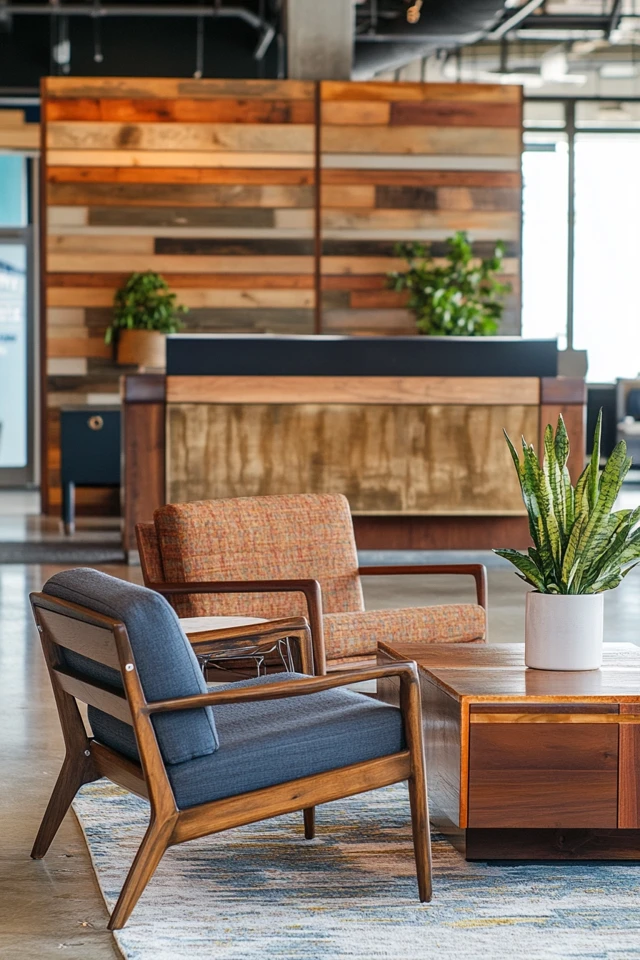
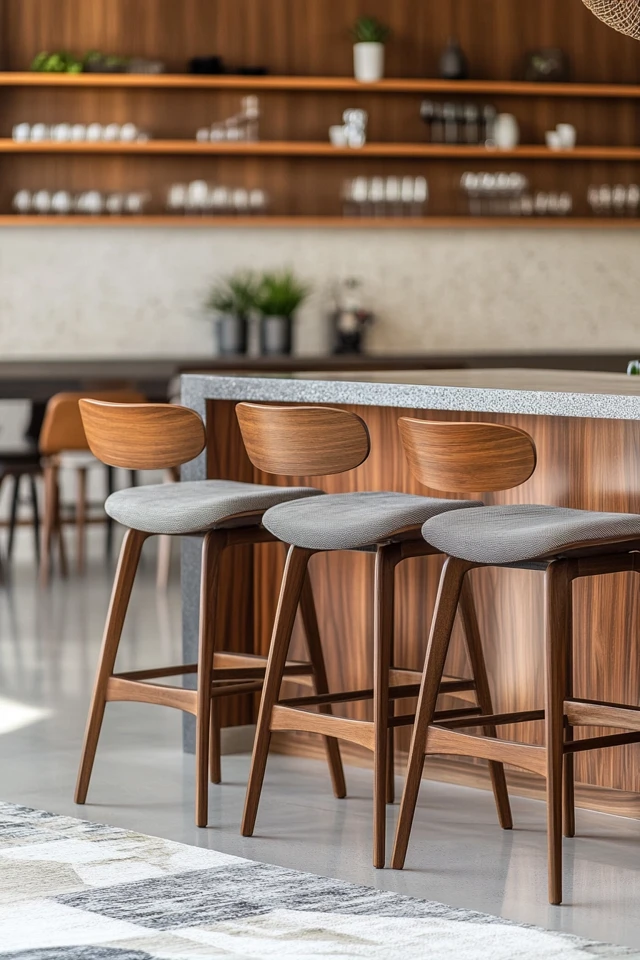


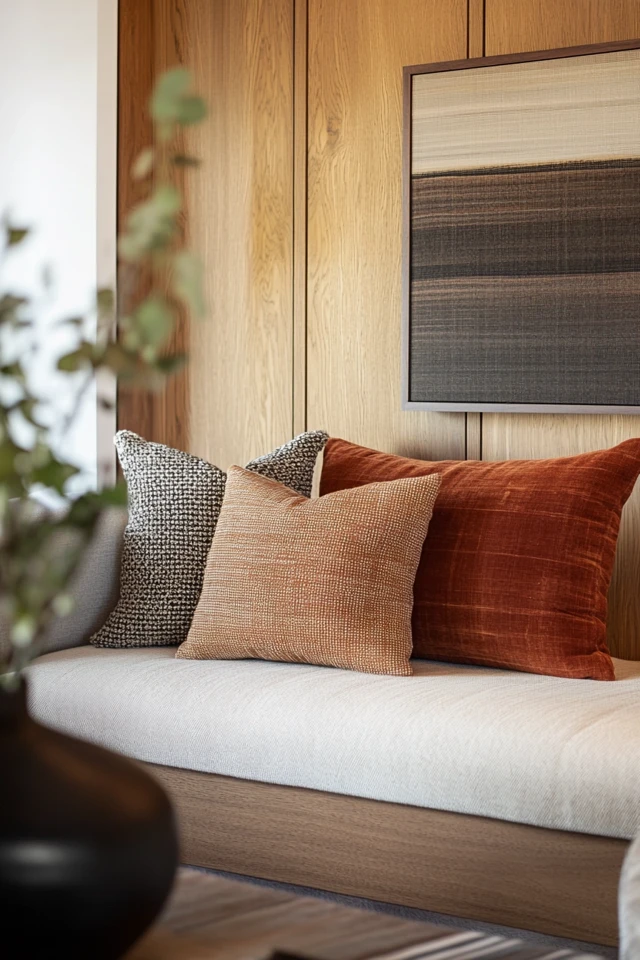
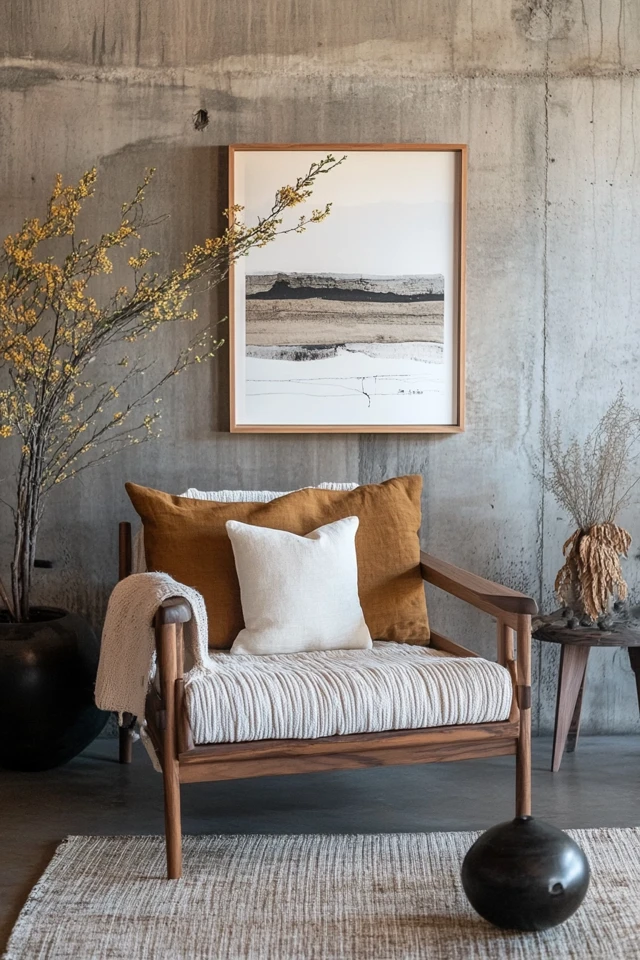
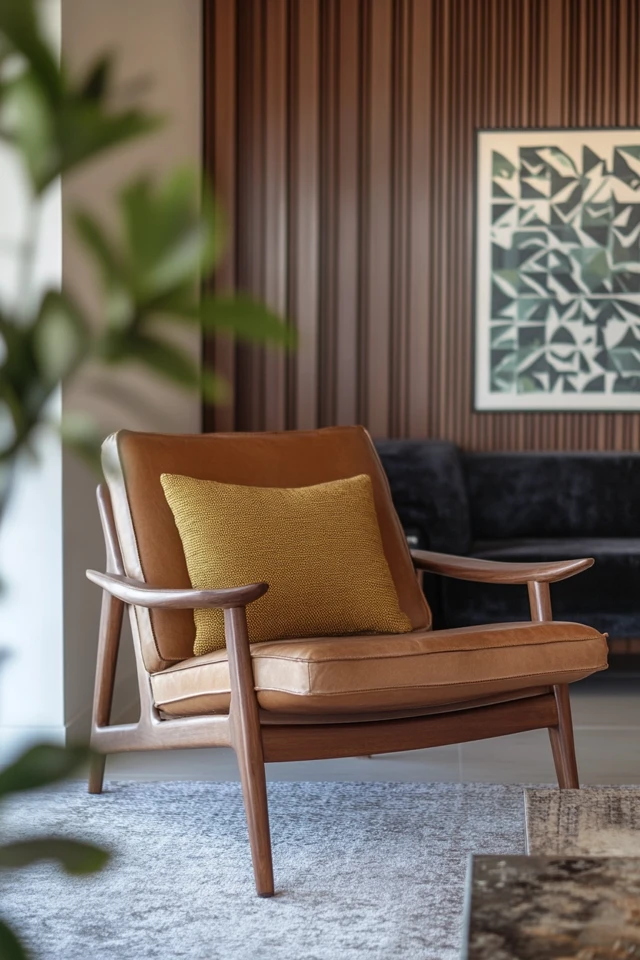

Conclusion
Achieving a mid-century modern look with sustainable materials allows you to honor the past while protecting the future. By choosing eco-friendly options like reclaimed wood, bamboo, natural textiles, and vintage furniture, you can create a timeless, stylish space that aligns with your environmental values.
Sustainability doesn’t mean sacrificing style—it’s about making thoughtful choices that reflect your personality and respect for the planet. Whether you’re designing a cozy living room, a functional dining area, or a serene bedroom, incorporating sustainable materials into mid-century modern design ensures your home is as beautiful as it is responsible.
FAQs
1. What are the best sustainable materials for mid-century modern furniture?
Reclaimed wood, bamboo, cork, FSC-certified wood, and recycled metal are excellent options.
2. Can I achieve a mid-century modern look on a budget with sustainable materials?
Yes! Shopping vintage or secondhand is both affordable and eco-friendly. You can also repurpose materials for DIY projects.
3. How do I ensure the materials I choose are sustainable?
Look for certifications like FSC for wood, GOTS for textiles, and ENERGY STAR for lighting. Ask manufacturers about their sourcing and production practices.
4. Are sustainable mid-century pieces durable?
Absolutely! Many sustainable materials, like reclaimed wood or bamboo, are incredibly durable and long-lasting.
5. Where can I find eco-friendly mid-century modern furniture?
Check retailers like West Elm, Article, or Etsy for sustainable collections, or shop vintage pieces on Chairish, 1stDibs, or local thrift stores.

